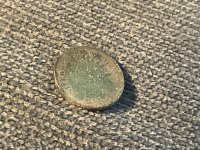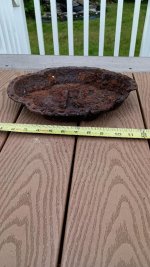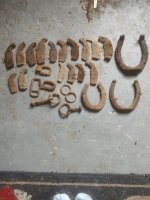Older The Better
Silver Member
- Apr 24, 2017
- 3,193
- 5,992
- Detector(s) used
- Whites Eagle Spectrum
- Primary Interest:
- All Treasure Hunting
Have had this rock sitting on a shelf because I found it buried in a site. When I found it I thought it didn’t look like much but it also was slightly unusual for the geology of the area… I assumed it was sandstone because that’s common in the area but it’s usually platy and angular so I kept it incase it turned out to be something. I picked it up today kind of absent mindedly and noticed the light color where I probably hit it with a shovel. After cleaning it more I’m not sure what it is. A sandstone or a quartzite or a granite.
I’m curious what you guys that actually have hard stone in your area think. If turns out to be an imported stone buried in a na site what it would be for? a nutting stone or a cooking stone or something else? It may be tough from pictures but I’ll give it a shot.





I thought the dark spots were lichen and the reddish bits exposed to heat but I’m wondering if the dark spots are biotite mica and the red k feldspar if I remember my classes right. I really want to knock off a corner but if it is something I’d rather not damage it
I’m curious what you guys that actually have hard stone in your area think. If turns out to be an imported stone buried in a na site what it would be for? a nutting stone or a cooking stone or something else? It may be tough from pictures but I’ll give it a shot.
I thought the dark spots were lichen and the reddish bits exposed to heat but I’m wondering if the dark spots are biotite mica and the red k feldspar if I remember my classes right. I really want to knock off a corner but if it is something I’d rather not damage it
Last edited:
Upvote
0






